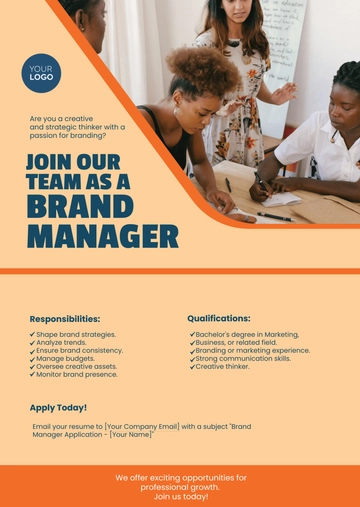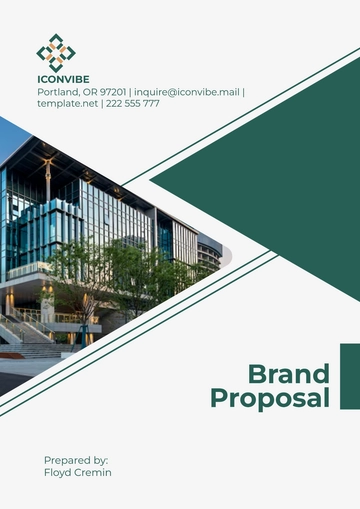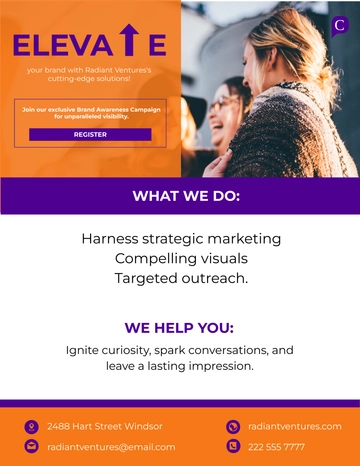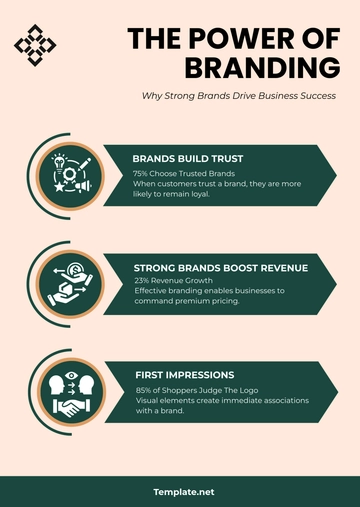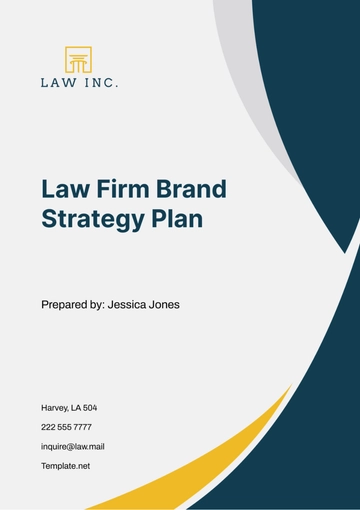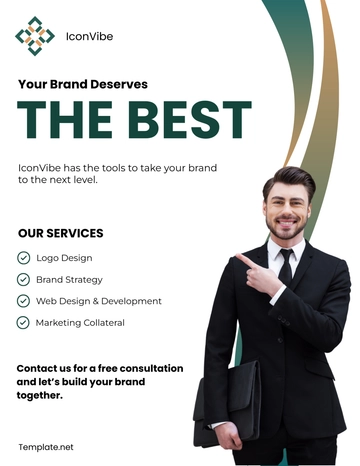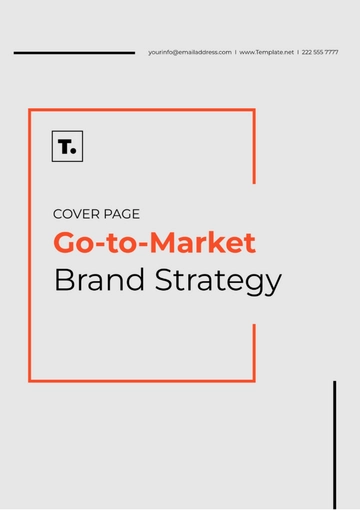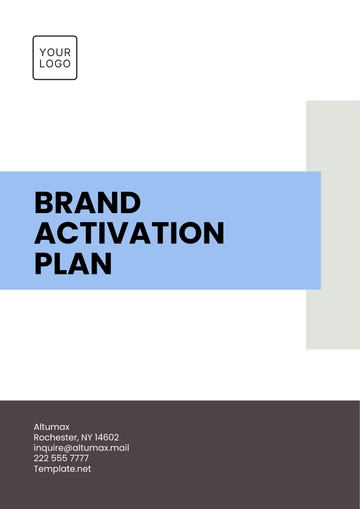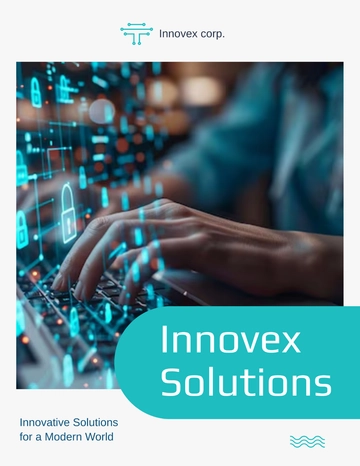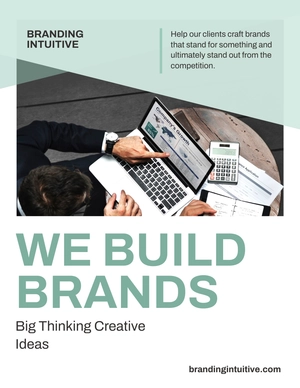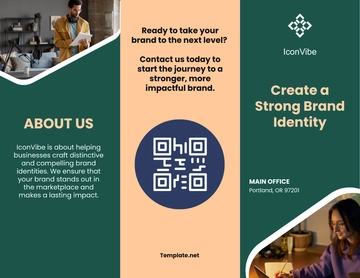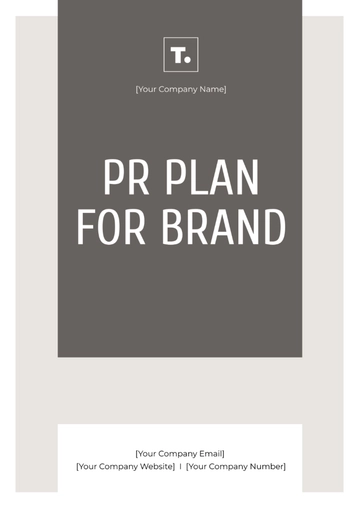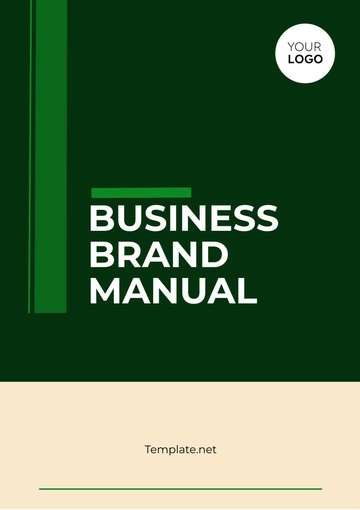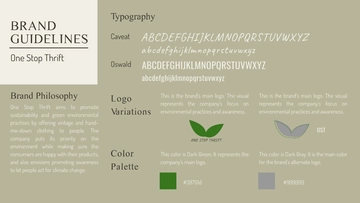Free Brand Experience Advertising Journey Map
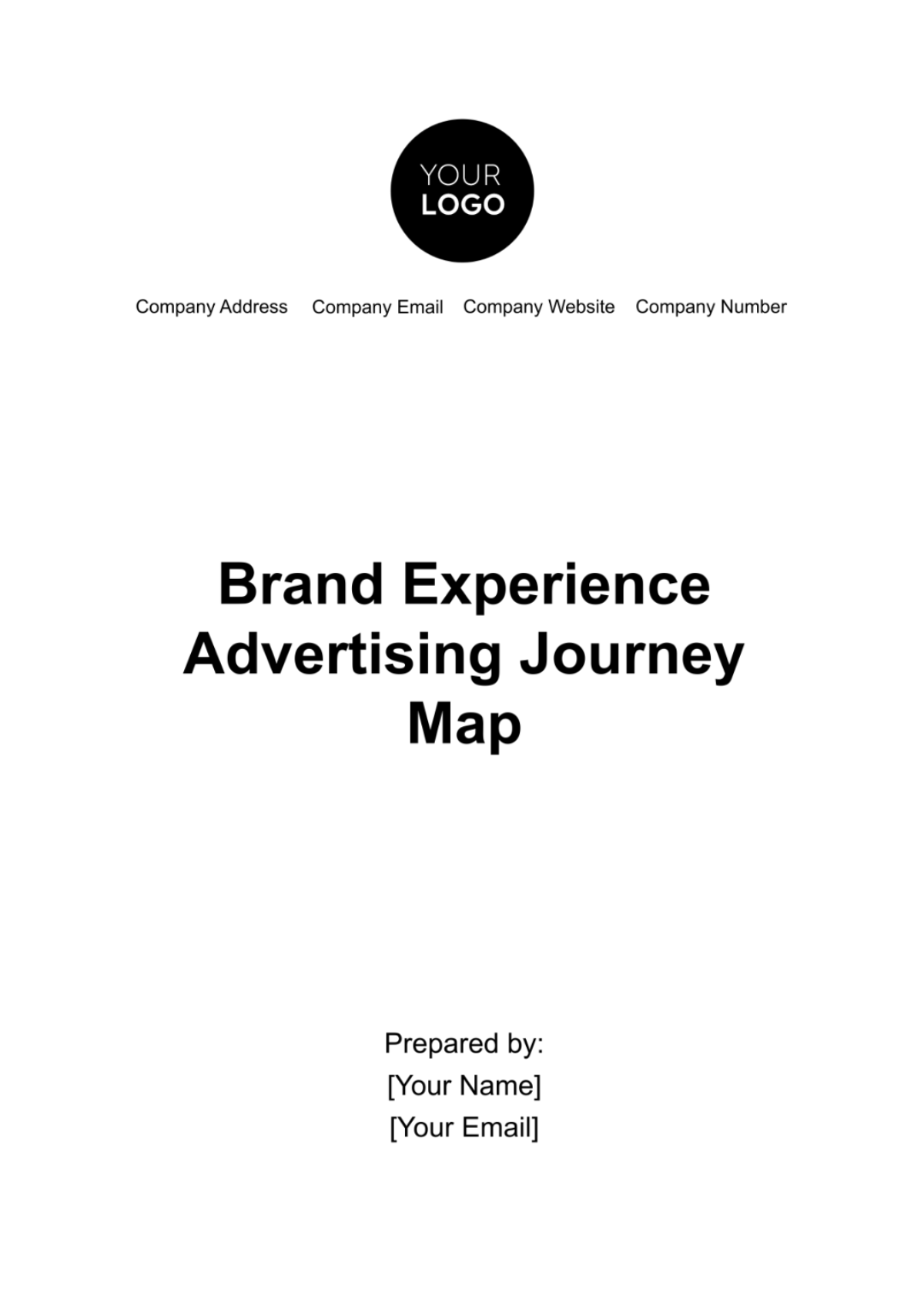
Introduction
[Your Company Name] is an advertising company specializing in digital and traditional marketing strategies. Known for its creative approach and personalized client services, the company has established a strong presence in the advertising industry.
Mission and Vision:
Our mission is to empower businesses through innovative advertising solutions that resonate with their target audiences. Our vision is to be a leader in the advertising industry, known for our creativity, effectiveness, and client satisfaction.
Purpose of the Brand Experience Journey Map
To outline the customer's journey from initial awareness of [Your Company Name] through to advocacy, highlighting key interactions and experiences along the way. This map covers five stages of the customer journey: Awareness, Consideration, Decision, Retention, and Advocacy. This map is designed for internal use by the marketing, sales, and client services teams to understand and enhance the customer experience, and for strategic planning by the management team.

Awareness Stage
In the Awareness Stage, the company leverages a multifaceted approach to reach potential customers. The strategy is to create visibility and establish a memorable first impression that resonates with the target audience. The approach to this stage are interactive social media campaigns, influencer partnerships, engaging online advertisements, and participation in key industry events.
Metrics:
Channel | Impressions | Engagement Rate |
Social Media | 750,000 | 8% |
Online Ads | 500,000 | 5% |
Word of Mouth | 500,000 | 12% |
Industry Events | 70,000 | 25% |
Customer Insights and Feedback
Our company employs a sophisticated suite of analytical tools. Social media analytics delve into sentiment analysis and trending topics to capture the mood and interests of the audience. Website traffic analysis is another crucial tool, providing insights into how visitors interact with the site, which parts they find engaging, and where they lose interest. This data, combined with detailed customer feedback surveys, forms a comprehensive understanding of the audience's perception and needs.
Collaboration with Other Departments
Regular strategy sessions are held between marketing, sales, and product development teams. These meetings are active workshops where insights are shared, feedback is discussed, and messaging is aligned. The company has also initiated cross-training programs to help each team understand the challenges and perspectives of the others, fostering empathy and a more cohesive approach to brand messaging.
Consideration Stage
During this stage, potential clients closely examine how [Your Company Name] stacks up against its competitors. This evaluation focuses on service quality, creativity and innovation, pricing transparency, and client satisfaction. In terms of client satisfaction, the company boasts a 90% positive feedback rate, outperforming its competitors.
Metrics:
Criteria | Competitor A | Competitor B |
Service Quality | 8/10 | 7/10 |
Creativity & Innovation | 8/10 | 8/10 |
Pricing Transparency | 7/10 | 6/10 |
Client Satisfaction | 80% Positive | 75% Positive |
Client Engagement and Feedback
[Your Company Name] actively engages potential clients through various means like consultations, surveys, and one-on-one interviews. This approach is vital in understanding the specific needs and preferences of clients, which in turn influences service customization. The company's adaptability and client-centric approach are evident in how it tailors services based on received feedback, demonstrating a commitment to meeting and exceeding client expectations.
Marketing and Communication Strategy
We had employed targeted marketing campaigns, educational content, and direct communication to address potential clients' concerns and to highlight its unique selling propositions. Various channels, including email campaigns, webinars, social media, and personalized meetings, are used to ensure effective communication. The success of these tactics is measured through engagement rates, lead generation, and conversion rates, ensuring a data-driven marketing approach.
Client Testimonials and Case Studies
Another significant element in this stage is the use of client testimonials and case studies. These testimonials and case studies are carefully selected to represent a diverse range of industries and project scopes, further demonstrating the company's versatility and breadth of experience.
Decision Stage
In the Decision Stage, the clients make their own choice to engage with [Your Company Name] for their advertising needs. This decision is influenced by several factors, including the personalized service offered, the company's portfolio of successful projects, competitive pricing, and the quality of client service.
Personalized Service
The company understands that each client has unique needs and challenges. By providing tailored services, the company demonstrates its flexibility and client-first approach. This personalized attention helps clients feel understood and valued, significantly influencing their decision to choose this company.
Portfolio as a Decision Factor
The successful portfolio of our company is a major factor in the decision-making process. Clients are often impressed by the variety of projects the company has handled, showcasing its adaptability and creativity. The portfolio not only highlights the company's past achievements but also gives clients a glimpse of the potential and quality of work they can expect.
Pricing and Transparency
Pricing strategy and transparency are crucial in the decision stage. We adopted a transparent pricing model, ensuring clients understand the value they receive for their investment. This clarity in pricing, coupled with competitive rates, positions the company favorably in the eyes of potential clients.
Exceptional Client Service
The quality of client service plays a huge role in tipping the scale in its favor. The company’s commitment to providing top-notch client service, characterized by responsiveness, proactive support, and a problem-solving mindset, ensures a smooth and satisfying experience for clients.
Decision Stage Metrics
Decision Factor | Satisfaction Rate | Industry Benchmark |
Personalized Service | 95% | 85% |
Portfolio Satisfaction | 90% | 80% |
Pricing Satisfaction | 88% | 82% |
Client Service Quality | 97% | 90% |
This table above shows how the company performs in key areas that influence the client's decision to engage with the company. The satisfaction rates are notably higher than industry benchmarks, indicating the company's effectiveness in meeting and exceeding client expectations.
Retention Stage
This stage extends further than the fulfillment of initial service agreements; it involves continuous engagement and efforts to deliver consistent value, ensuring clients remain satisfied and loyal over time. The strategies implemented in this stage are designed to retain clients and turn them into long-term partners and advocates for the brand.
Metrics:
Activity | Participation Rate | Client Satisfaction Rate |
Regular Updates | 75% | 65% |
Client Workshops | 50% | 70% |
Loyalty Programs | 60% | 80% |
Ongoing Client Engagement
Our company heavily emphasizes the importance of ongoing client engagement. This is achieved through regular communication, updates on new services or market trends, and by seeking continuous feedback. The company ensures that clients are always in the loop and feel involved. This ongoing dialogue helps in promptly addressing any concerns and adapting services to evolving client needs, reinforcing a sense of partnership and commitment.
Customized Solutions and Upselling
A key aspect of the Retention Stage is offering customized solutions that evolve with the client's changing needs. We excel in understanding these dynamics and proactively propose new services that could benefit the client. Upselling is approached not merely as a sales tactic but as a means to provide additional value, ensuring that clients have access to the full range of services that can aid in their growth and success.
Client Appreciation and Incentives
Recognizing and appreciating clients is fundamental for our approach. This recognition comes in various forms, such as acknowledging client milestones, providing exclusive offers, or running loyalty programs. Such gestures of appreciation strengthen the emotional connection with the brand and foster a sense of belonging among clients.
Regular Performance Reviews and Improvement
The company conducts regular performance reviews with clients, discussing achievements and areas for improvement. These reviews are not just formalities but are integral to understanding client satisfaction and adjusting strategies as needed. This process ensures that the company consistently meets and exceeds client expectations, key to maintaining long-term relationships.
Advocacy Stage
In the Advocacy Stage, the focus shifts from satisfying clients to inspiring them to actively advocate for our company. This transition is vital as client advocates are not only repeat customers but also influential in attracting new clients through their testimonials and referrals.
Metrics:
Channel | Referral Rate | Engagement Rate |
Referrals | 30% | - |
Social Media | - | 40% |
Testimonials | - | 35% |
Case Studies | - | 25% |
Cultivating Client Advocates
We recognized the importance of turning satisfied clients into brand advocates. This process involves identifying clients who are particularly satisfied with the services and engaging them in a way that encourages them to share their positive experiences. This could be through featuring them in case studies, asking for testimonials, or involving them in referral programs.
Leveraging Positive Experiences
The company diligently collects and showcases positive client experiences across various platforms. These platforms include social media, the company website, and marketing materials. Testimonials and case studies serve as powerful tools for demonstrating the company's capabilities and success stories, providing tangible proof of client satisfaction and the value delivered.
Referral Programs
A structured referral program plays a significant role in this stage. [Your Company Name] incentivizes existing clients to refer to new businesses, rewarding them for their endorsements. These rewards are not just financial but can also include exclusive access to services, events, or other forms of recognition, creating a mutually beneficial relationship.
Community Building and Engagement
Building a community around the brand is another strategy we have employed. This involves creating forums, groups, or events where clients can interact, share experiences, and feel a part of the brand's community. Such initiatives not only reinforce client relationships but also foster a network of advocates who feel connected to and invested in the brand's success.
Measuring Advocacy Impact
The company closely monitors the impact of advocacy efforts through metrics like referral rates, engagement on advocacy-related content, and the growth of its community. This data helps in understanding the effectiveness of the advocacy strategies and in making necessary adjustments to enhance their impact.
In the Advocacy Stage, [Your Company Name] skillfully transforms satisfied clients into enthusiastic brand advocates. Through strategic engagement, leveraging positive experiences, implementing referral programs, and building a brand community, the company turns its clients into its most powerful marketing asset. This stage is not just about harnessing word-of-mouth but about nurturing a community that is deeply connected to and passionate about the brand.
Conclusion and Key Takeaways
The Journey Map for [Your Company Name] provides an overview of the customer's journey, from initial awareness to becoming a dedicated brand advocates. This journey is a cycle of continuous engagement and growth, both for the clients and the company.
Key Takeaways
Integrated Approach: Each stage of the journey - Awareness, Consideration, Decision, Retention, and Advocacy - plays a critical role in building and maintaining strong client relationships. The company's success lies in its integrated approach, where each stage seamlessly transitions into the next, ensuring a consistent and positive brand experience.
Client-Centric Focus: At the core of this journey is the client-centric focus. The company’s dedication to understanding and meeting client needs, coupled with its commitment to quality and innovation, has been instrumental in building trust and loyalty.
Dynamic and Adaptive Strategies: The journey map underscores the company's dynamic and adaptive strategies. In a constantly evolving market, we had remained agile, continually refining its approach based on client feedback and market trends. This adaptability is key to staying relevant and competitive.
As [Your Company Name] continues to navigate this journey, the focus remains on enhancing each stage of the client experience. The company is committed to innovation, excellence, and fostering relationships that transcend traditional client-company dynamics.
This Journey Map is a strategic tool that summarizes the essence of the company's approach to client engagement. It serves as a guide for maintaining the highest standards of service and client satisfaction, ensuring that the company remains a leader in the advertising industry.
- 100% Customizable, free editor
- Access 1 Million+ Templates, photo’s & graphics
- Download or share as a template
- Click and replace photos, graphics, text, backgrounds
- Resize, crop, AI write & more
- Access advanced editor
Introducing the Brand Experience Advertising Journey Map Template from Template.net, your essential companion for crafting unforgettable brand journeys. This editable and customizable tool allows you to chart every touchpoint with precision. Seamlessly tailor experiences using our Ai Editor Tool, ensuring your brand's narrative resonates authentically with your audience at every step.
